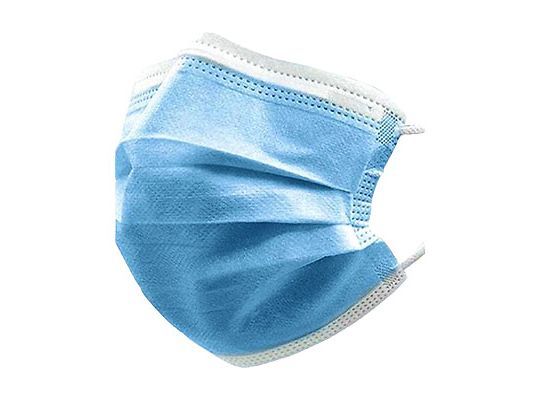Diabetes and How It Affects Your Feet

The Diabetic Foot
According to recent research, there are over 3.9 million people living with diabetes in the UK, with approximately 700 people a day being diagnosed. That's the equivalent of one person every two minutes!
Diabetes, a condition that affects the body’s ability to break down excess sugar in the bloodstream, can cause serious complications to the body. Two that frequently affect the foot are peripheral vascular disease and peripheral diabetic neuropathy and are the most common cause of non -traumatic lower limb amputation in diabetics.
The reason for this is that excess sugar in the bloodstream damages the small and large blood vessels, affecting the flow of blood around the body. Without good blood supply flowing down to the feet, the skin becomes very dry and fragile, making it prone to small cracks and cuts, which in turn take longer to heal due to having poor blood supply. As a result, these small cracks and cuts become at high risk of complications such as further ulceration and infection. In addition to damaging the blood vessels, excess sugar in the blood can also damage nerve fibres. If the nerves to your feet are damaged, you will lose sensation and will not be able to feel heat, cold or pain. Therefore, if you cut your foot, the cut could get much worse and become infected before you even realise there is an issue. Furthermore, if the nerves that supply the muscles to your feet are damaged it could affect the way you walk, resulting in callus and corns from forming or even injuries, increasing the risk of complications such as ulcers, infections or even a Charcot foot.
Common Conditions that affect the diabetic foot
Anyone can get the following foot problems, however for people with diabetes, these common foot problems can lead on to further complications.
Athlete's foot - Athlete's foot is a fungal infection in the skin that causes itching, redness, and cracking. Germs can enter through the cracks in your skin and cause an infection.
Fungal nail infection – Fungal infections in the nail may cause the nail to become discoloured (yellowish-brown or opaque), crumbly, very thick and brittle, causing discomfort in footwear and may become loose or drop off. Fungal infections are difficult to treat and should be done so via a podiatrist or GP.
Calluses - Callus is a build-up of hard skin, usually underneath the foot or on tops of toes and is caused by excess pressure and friction on skin. Calluses can become painful if they are left to build-up and can ulcerate if not treated accordingly.
Corns - A corn is a build-up of hard skin usually on an area of high pressure or from rubbing. Again, corns can become very painful if left and not treated. Do not use over-the-counter remedies to dissolve corns and DO NOT try to cut the corn or remove it with a sharp object.
Blisters - Blisters occur when your shoes rub on the same spot for a prolonged period. If a blister bursts or is de-roofed it can become infected.
Bunions - A bunion forms when your big toe deviates toward your second toe. Often, the big toe joint sticks out and forms a hard bony lump which may become red and callused from rubbing in footwear, making it prone to blisters and ulcers.
Ulcers - An ulcer is a break in the skin or a deep sore, they can happen from minor scrapes, cuts that heal slowly, or from the rubbing of shoes that do not fit well.
Hammertoes - A hammertoe is a toe that is bent because of a weakened muscle. The weakened muscle makes the tendons in your toe shorter, causing your toe to curl under your foot. Hammertoes can cause problems with walking and can lead to blisters, calluses, and sores.
Ingrown toenails - Ingrown toenails happen when the edges of the nail grow into your skin. They cause pressure and pain along the nail edges. The edge of the nail may cut into your skin, causing redness, swelling, pain, drainage, and infection if not treated accordingly.
Plantar warts - Plantar warts look similar to corns but have a cauliflower appearance and may have black spots in them. Plantar warts are caused by a virus that infects the outer layer of skin on the soles of the feet. If left, they can spread to other sites and people easily and can be difficult to treat.
Getting your feet checked by a professional
If you have diabetes, it is very important to have your feet checked regularly by a qualified podiatrist who will be able to assess your feet and identify any serious problems as well as advise on an appropriate care plan and treat any conditions. A word of warning: many problems start with either self-treatment or as a result of inappropriate treatment by inexperienced individuals.
Qualified podiatrists receive a high level of training in the assessment and treatment of the diabetic foot whilst studying for their degree. To ensure your podiatrist is fully qualified, ensure you choose a podiatrist that is registered with the Health & Care Professions Council (HCPC), which you can find by either looking up their HCPC registration number or by going on to the Health & Care Professions Council website and looking up their name.
Tips for Diabetic Foot Care
Here are some tips for good diabetic foot care:
Take care of yourself and your diabetes. Follow your doctor's advice regarding nutrition, exercise, and medication. Keep your blood sugar level within the range recommended by your doctor.
Check your feet every day for sores, blisters, redness, calluses, or any unusual changes.
Wash your feet in warm water. Test the temperature of the water with your elbow as nerve damage can affect your hands, too. Dry your feet well, especially in between your toes.
Apply emollient to your feet daily to prevent dryness and help soften calluses and corns. Do not put emollient in between your toes however as it can cause fungal infections.
Gently file any calluses with an emery board. Do this after your bath or shower when your skin is soft.
Cut your toenails straight across. Do not round off the corners or cut down on the sides of the nails. File the toenails with a nail file.
Wear well-fitting and supportive, enclosed shoes that do not rub. Do not walk barefoot, even around the house.
Always wear socks or stockings that fit your feet well and have soft elastic.
Always check the inside of shoes to make sure there are no objects inside.
Protect your feet from heat and cold; Wear shoes at the beach or on hot pavements, do not put your feet directly into a hot bath and do not put your feet onto a radiator or too close to a heater. Wear thermal socks at night if your feet get cold.
Keep the blood flowing to your feet. Regular gentle walking and gentle leg exercises can help improve the blood flow to your feet. Put your feet up when sitting, wiggle your toes and move your ankles several times a day, and don't cross your legs for long periods.
If you smoke, stop smoking. Smoking can make problems with blood flow worse.
If you have a foot problem or notice any changes to your feet, contact your podiatrist or GP.
See your podiatrist every 6 months for check-ups, even if you don't have any foot problems. If you have problems such as calluses and corns, peripheral arterial disease, or peripheral neuropathy, it is advised that you see your podiatrist every 6 -12 weeks, depending on the severity of your foot problems.
Blog by Fonti Bentley - BSc (Hons) Podiatric Medicine, MCPOD, HCPC:CH3309
Fonti Bentley graduated from the University of East London in 2013 obtaining a First Class Bachelor of Science degree in Podiatric Medicine and won an award for the overall highest clinical grade achieved in her cohort. She has worked for some of the UK’s leading medical institutions in London including St Martin-In-Fields Homeless Shelter, Great Ormond Street Hospital and London’s leading Kings College Diabetic Foot Clinic. Fonti’s most recent role in the NHS was based at Hertfordshire Community NHS Trust where she worked as a Specialist Podiatrist as part of an autonomous team, assessing and treating diabetic and high-risk patients and managing a wound care clinic. Fonti currently works as a Private Podiatrist for Betafeet Podiatry in Tring, treating various foot complaints such as;
- Routine nail and skin pathologies
- Verruca
- Diabetic foot assessments
- Lower limb Vascular assessments
- Nail surgery
- Wound care management
- Musculo-skeletal disorders and sports injuries
- Orthotics (insoles)





